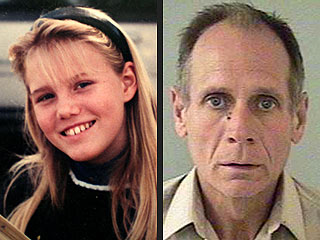Police search, but wouldn't be able to force them to return home.
Updated: 10/03/2009 10:17:03 PM EDT

This
photo, taken at a York County convenience store in July, shows James
Edwin Blymire Jr. Blymire has been missing since early July from his
Red Lion home. Anyone with information may call police at 741-1259.
James Edwin Blymire Jr. went missing in early July, abruptly walking out of the home he shared with his brother in Red Lion following an argument, police said.
Barb Blymire, one of James Blymire's sisters, said her brother suffers from congenital brain damage and can easily be coerced into doing things.
"How's he getting food? I wonder if he's eating, or if he's even breathing," she said. James Blymire's siblings haven't seen him since he left his home, but his image has been captured by several York County convenience store surveillance cameras, according to York Area Regional Police.
York Area Regional Detective Don Hopple has logged numerous hours in his search for the 48-year-old Blymire, talking with family members, former roommates, and even the person who cut his hair. Twice, Hopple's been about a day behind Blymire, he said.
If Hopple finds Blymire, the most he can do is tell him that his family is worried about him and that he might want to give them a call.
"If he says, 'I don't want to go home,' then that's where it ends," Hopple said.
That's because despite any mental deficiencies Blymire may have, he is an adult and is therefore entitled to choose where and with whom he stays.
"We can't force somebody to make contact with their family if they've decided for reasons best known to them that they don't want to contact them," Northern York County Regional Deputy Chief Mark Bentzel said.
Todd Matthews, U.S. media director for the Doe Network,an international volunteer organization for unidentified and missing persons, said that as an adult, "You have a legal right to go missing (but) it's not morally right."
According to the FBI's National Crime Information Center, as of Aug. 31, there were nearly 100,000 missing persons, adults and children, in their record; 551 of them are missing from Pennsylvania.
In the past few months, there have been several missing adults on whom police issued news releases; mental illness, drug abuse, or a combination of both appeared to have played a role in all of the disappearances. All have returned home, except for Blymire.
Voluntary vanishing
According to Bentzel, "The first thing you have to do is evaluate if there's any threat or harm or risk to the person, either by their own hand or someone else's."
If the suspected reason a person is missing falls into one of several criteria, then they are entered into the NCIC, Bentzel said.
The criteria include if they are a harm to themselves or a harm to others; if they have a disability -- physical or mental; if they have had an involuntary disappearance; if they are endangered -- physical safety, illness, medication; or a catastrophe has occurred. A person over 18 not meeting the other criteria, but whose safety is a concern, also would be entered into the NCIC.
And even though the missing person may be an adult and can choose to go missing, police still put forth an effort to find them, York City Police Commissioner Mark Whitman said.
"First of all, anytime a missing person is reported, it's nothing that can be taken lightly," he said. "There's quite a bit to it. It's not, let me take a report and see what happens. Once you start that report, then it gets into a regular investigation. It's not something that you're going to blow off."
Police have a number of techniques at their disposal to locate missing persons, most of which they do not want to disclose.
"Each set of circumstances is going to dictate the method and what you're going to need to do," Whitman said.
Still searching
Hopple started his search for James Blymire with the missing man's family, getting a feel for who he was looking for. They gave him a photo, taken about a year before, but it was inaccurate -- the 6 feet, 2 inch Blymire was now rail-thin at about 150 pounds, when a year before, he had weighed about 100 pounds more.
Knowing what convenience stores Blymire frequented, Hopple was able to get surveillance tapes from the stores and soon found footage of Blymire.
He soon discovered another difference in Blymire's appearance: his bushy salt-and-pepper hair was now close-cropped. Hopple was able to determine it happened between July 3 and 4, soon after Blymire had left his home.
In addition, Hopple found out Blymire stopped using a bank card to an account he shared with one of his sisters on July 18. Without the use of the card, it is difficult to track Blymire, Hopple said.
Blymire's family thought he may have been kidnapped by a group of people living in York, but the footage showed Blymire "at different dates and times coming and going under his own power," he said.
Hopple interviewed a number of York residents -- including some that had seen him on Aug. 18. From that point, though, the trail has gone cold, with no sightings of Blymire, Hopple said.
Barb Blymire knows this, but said recently, "I've just got to keep thinking positive and moving forward."
tczech@ydr.com; 771-2033.
SEEN HIM?
James Edwin Blymire Jr., 48, was reported missing July 9, according to York Area Regional Police. He was last seen at his residence on July 2.
He is described as a white male, 6-feet, 2-inches tall, about 150 pounds (he has lost a lot of weight) and has a tattoo of "Jim" on his left arm.
Anyone with information may call police at 741-1259.
RECENT LOCAL MISSING PERSONS
Tina Hunter of York said husband Donald Hunter, who has bipolar disorder, went missing in late August.
"He left his wallet, his keys -- just walked out of the house," she said.
On Sept. 16, Donald Hunter contacted his brother in Harrisburg, ending his disappearance, Tina Hunter said.
A Dover area man was reported missing Sept. 14 in Adams County but was found five days later, according to Pennsylvania State Police in Gettysburg.
Jeffrey Glen Thomas, 51, had been last seen leaving a home in the first block of Barts Church Road in Union Township. Police did not provide information on why he left.
A Manchester man was reported missing in July by his wife. She described him as a recovering drug addict, who had endured several relapses during his addiction, and feared he might have experienced another.
He returned home less than week later. He declined to be interviewed for this story.
OTHER NOTABLE MISSING PERSON
Ray Frank Gricar, 63, is white, 6 feet, 170 pounds, green eyes, brown and gray hair. For almost 20 years, Gricar served as the District Attorney for Center County. On April 16, 2005, Gricar's red and white Mini Cooper was found in a parking lot in Lewisburg, near the Susquehanna River, but Gricar was not found. Gricar may also use the names "Ray Lange" or "Ray Gray." He was last seen wearing a blue fleece jacket, jeans, and tennis shoes.
Jason Knapp, who at one time lived in York County, has been missing since April 12, 1998. The then-20-year-old Clemson University sophomore's car was found shortly after his disappearance at Table Rock State Park in Pickens County, S.C., which is about 30 miles from the school.
FINDING SOMEONE
How can people improve the chances that their loved one will be found? Law enforcement agencies need as much information as possible when trying to solve cases.
Contact information for the missing person's dentist so dental records can be obtained.
Fingerprints (Did the missing person ever get a background check with fingerprints?).
DNA samples. For example: a personal item that will provide DNA (hairbrush, toothbrush, etc.) or DNA samples from family members that can be submitted for DNA analysis.
Good, clear photos of the missing person.
Source: www.findthemissing.org, the Web site for the National Missing and Unidentified Persons System.















